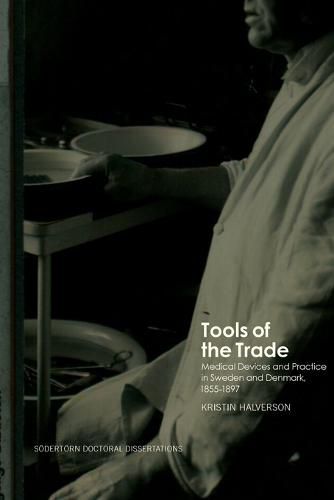Readings Newsletter
Become a Readings Member to make your shopping experience even easier.
Sign in or sign up for free!
You’re not far away from qualifying for FREE standard shipping within Australia
You’ve qualified for FREE standard shipping within Australia
The cart is loading…






This title is printed to order. This book may have been self-published. If so, we cannot guarantee the quality of the content. In the main most books will have gone through the editing process however some may not. We therefore suggest that you be aware of this before ordering this book. If in doubt check either the author or publisher’s details as we are unable to accept any returns unless they are faulty. Please contact us if you have any questions.
Nineteenth-century medicine is characterised by rapid technological change, new
methods of diagnostics and treatments of disease, long-reaching developments
in medical science, and professionalisation. This has led to great interest in the
period and a large body of scholarly and popular research. However, much of this
scholarship studies British, German and French contexts. There is a pressing need
to study how knowledge and practice were transferred between regions and how
medical technologies were adapted locally.
Using Swedish and Danish medical journals, Kristin Halverson looks more closely
at the relationships between knowledge, practice and device between 1855 and
matters. With this in mind, this study examines four technological concerns in
medicine more closely, namely devices used to examine the nose, throat and eye;
orthopaedic practice; Listerist antisepsis; and the introduction of asepsis. These
cases highlight how technologies were adapted locally and in practice. This is a
history of nuance that highlights the diverse landscape of nineteenth-century
medical practice.
$9.00 standard shipping within Australia
FREE standard shipping within Australia for orders over $100.00
Express & International shipping calculated at checkout
This title is printed to order. This book may have been self-published. If so, we cannot guarantee the quality of the content. In the main most books will have gone through the editing process however some may not. We therefore suggest that you be aware of this before ordering this book. If in doubt check either the author or publisher’s details as we are unable to accept any returns unless they are faulty. Please contact us if you have any questions.
Nineteenth-century medicine is characterised by rapid technological change, new
methods of diagnostics and treatments of disease, long-reaching developments
in medical science, and professionalisation. This has led to great interest in the
period and a large body of scholarly and popular research. However, much of this
scholarship studies British, German and French contexts. There is a pressing need
to study how knowledge and practice were transferred between regions and how
medical technologies were adapted locally.
Using Swedish and Danish medical journals, Kristin Halverson looks more closely
at the relationships between knowledge, practice and device between 1855 and
matters. With this in mind, this study examines four technological concerns in
medicine more closely, namely devices used to examine the nose, throat and eye;
orthopaedic practice; Listerist antisepsis; and the introduction of asepsis. These
cases highlight how technologies were adapted locally and in practice. This is a
history of nuance that highlights the diverse landscape of nineteenth-century
medical practice.